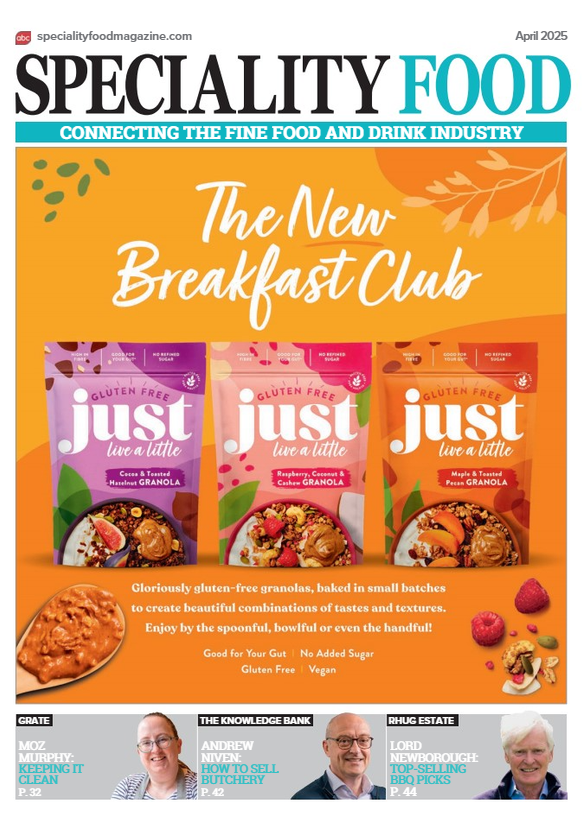“Cheese magic – it’s in our culture”

- How one cheese shop supported locals in lockdown
- Rory Mellis, IJ Mellis: “Local businesses have a chance to flourish”
- Why we should be proud of the cheese industry’s response to Covid
- The joy of cheese grading
- “Keeping the faith”
We all know that cheese is magic… really. Some milk, some rennet, some starter culture, some salt and maybe sometimes some controlled mould, and hey presto you have thousands of different cheeses
Not only that, but each of those cheeses is just slightly different each time you make it, then once they are made they still continue to change just a little bit each day. Infinite variety from just four or five different ingredients. When it comes to food, what could be more magic than that?
Homage must first be paid to the milk and the cows and farmers that produce it. It goes without saying that without it there is no magic and no infinite variety. Milk varies from farm to farm, region to region and country to country. Clifton Fadiman said that “cheese is milk’s leap towards immortality” and in that leap it maintains the DNA of the milk from which it came. It’s particularly important in unpasteurised cheeses as the naturally occurring bacteria in the milk all help to begin the process by metabolising the milk sugars (lactose) and souring the milk, thus starting the cheesemaking process.
When cheese is made from pasteurised milk it is the starter culture that plays the single most important role in developing the flavour and character of the finished cheese. The pasteurisation process kills off the naturally occurring bacteria (good and bad) in the milk, and it is the introduction of starter culture (friendly bacteria) which have to the perform the function of starting the cheesemaking process by souring the milk, and going on to produce the cheese flavour through enzymatic breakdown of the milk proteins, fats and carbohydrates. Of course, cheesemaking methodology is critical to the sublime variety of different cheeses, but it is the type and mixture of strains of these friendly bacteria used in the process that ultimately make the biggest difference to the flavour of the cheese.
It is therefore vital, if we are to avoid a world of bland uniformity in cheese, that we maintain a richly diverse range of starter cultures available to cheesemakers that continue to reflect the region from which each cheese is from. By their nature, starter cultures were originally a very local phenomenon, unique to each cheesemaking region, often taking the form of whey from the previous day’s cheesemaking. This whey would have been used to enhance the effect of the bacteria present in that day’s fresh milk straight from the farm. Often these “whey cultures” would become corrupted over time and a cheesemaker would have gone to a neighbouring farm to borrow some of their whey to start the next day’s cheesemaking. A virtuous circle of co-operation that gave local cheeses with a shared name their common identity. This tradition of whey cultures is being revived today with new UK makers experimenting by using whey in place of modern freeze-dried cultures and bringing back some much welcomed and applauded “cultural diversity.” One such maker is Hill Farm Dairy, in Somerset, who took their first steps into using whey starters back in 2014 and seem to be growing in confidence in their use providing them with something unique – their own bit of magic.
Barber’s are the guardians of the last of the cheese starter culture collections based on this noble tradition left in the UK. These cultures were originally based on the whey cultures that were shared between cheesemakers in the Cheddar region of the South West (there were once 12 cheese-makers in the Barber’s home Parish of Ditcheat, Somerset alone). The collection, based on the naturally occurring bacteria in the local milk, was refined into a formal collection of cultures in the second half of the last century by dairy industry leader Unigate. However, by the 1990s, production of starter cultures became much more commercial and the collection had to be saved from extinction when the advent of easier to use freeze-dried cultures rendered them commercially less viable. The tremendous diversity and delicacy of bacterial flora and fauna in these traditional cultures simply couldn’t survive the freeze drying process and their key contribution to maintaining the unique character of Cheddar from its original region could have been lost to future generations.
Happily, these mother cultures are alive and well (at Barber’s Maryland Farm and also a duplicate set stored for safety at another undisclosed location as a back-up) and are being used not only for the making of Barber’s own Farmhouse Cheddar but also by over a dozen other artisan cheesemakers. The tradition of local cheese makers working together to preserve the sanctity of a clearly defined and importantly historic British regional cheese is still alive and well in a world that threatens the original identity of many of our sacred foods.
So when you are next tucking into your favourite cheese, just stop to ask the question about where it’s from and how, in more ways than one, it is a reflection of its region – and remember the little bit of magic that makes it such a special food.
more from Cheese Talk
-
“Don’t sway to populists”
25 August 2016 Cheese TalkWith consumer demands continually fluctuating and markets changing on a yearly basis, it’s almost impossible to predict what the new craze or sudden ‘loser’ will be. -
“Making a spectacle of yourself”
12 July 2016 Cheese TalkUntil a few weeks ago I was feeling rather smug about my moved to New Zealand, basking in a four month-long near-drought with autumn temperatures rarely falling below 20ºC -
“Cheese magic – it’s in our culture”
17 May 2016 Cheese TalkWe all know that cheese is magic… really. Some milk, some rennet, some starter culture, some salt and maybe sometimes some controlled mould, and hey presto you have thousands of different cheeses

